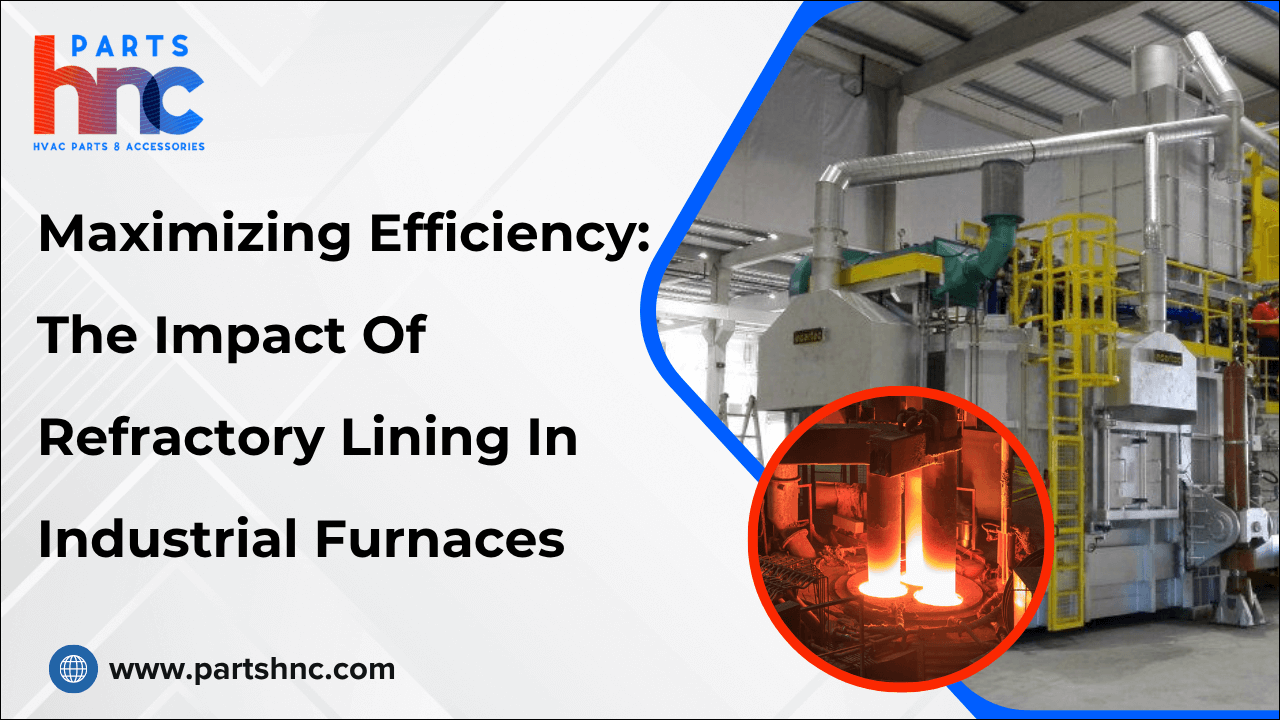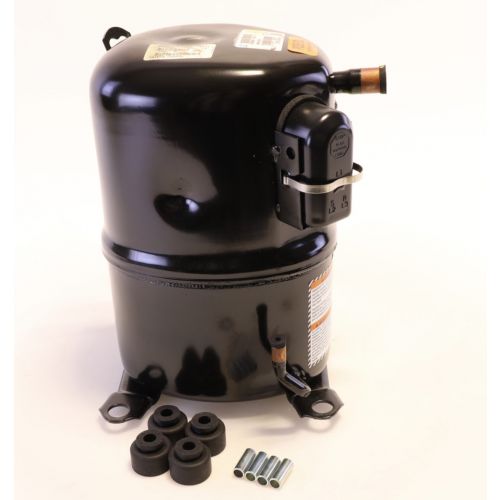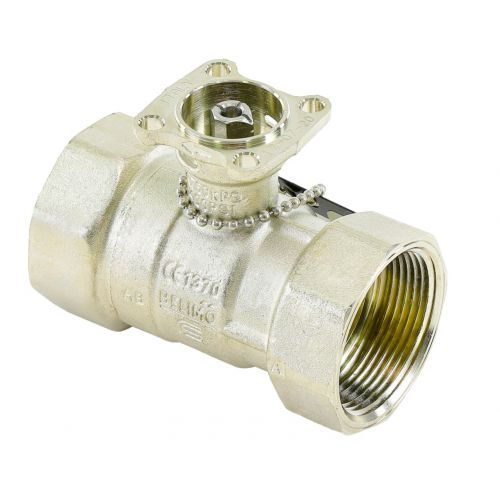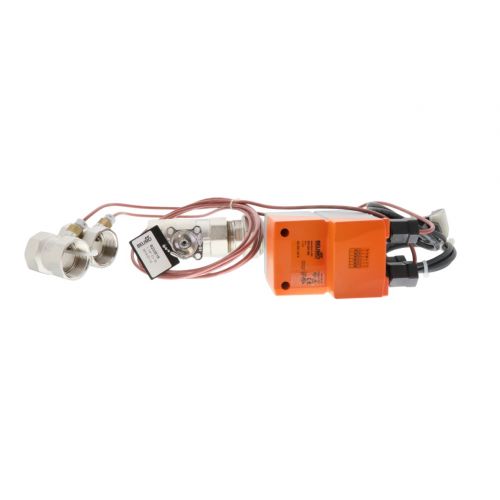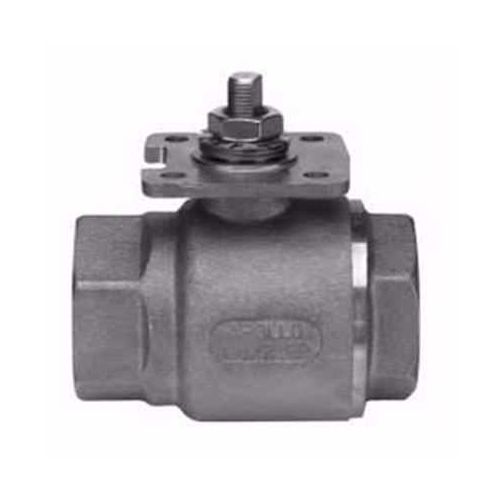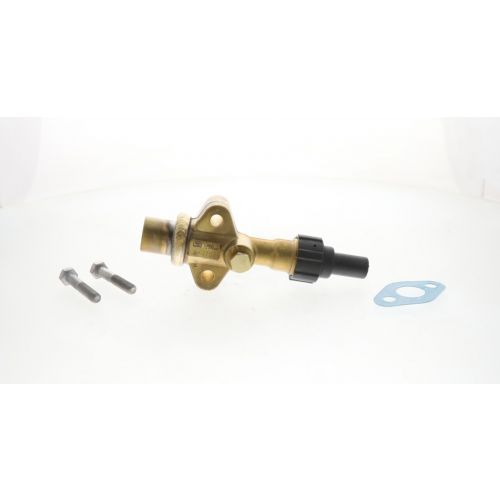Maximizing Efficiency: The Impact Of Refractory Lining In Industrial Furnaces
Industrial furnaces and HVAC heating systems operate under extreme temperatures and harsh conditions, making efficiency and durability crucial for optimal performance and cost savings. At the heart of this lies the refractory lining, a heat-resistant material that protects furnace and boiler walls from intense heat, chemical corrosion, and mechanical wear. Working in tandem with the refractory lining, burners are essential components that generate the high-temperature flames necessary for combustion, making their efficiency and alignment with refractory materials critical for overall system performance.
Beyond protection, refractory linings significantly influence energy consumption by minimizing heat loss and maintaining stable internal temperatures. This not only reduces fuel costs but also extends equipment lifespan and improves process consistency. As industries and HVAC operations push for higher productivity and sustainability, understanding the impact of refractory lining on furnace efficiency becomes essential. This article explores how selecting, installing, and maintaining the right refractory lining can maximize system performance and reliability.
What is Refractory Lining In Industrial Furnaces, And Why is It Important for Efficiency?
Refractory lining is a crucial component inside industrial furnaces, designed to withstand extremely high temperatures while protecting the furnace’s structural shell. It is composed of specialized heat-resistant materials such as firebrick, castable refractories, and ceramic fibers. These materials can endure intense thermal, chemical, and mechanical stresses encountered during furnace operation.
Refractory linings are also important in HVAC systems, especially in components exposed to high heat, where they help maintain efficiency and protect equipment.
Key functions and importance of refractory lining:
-
Thermal Insulation: Minimizes heat loss through furnace walls to maintain high internal temperatures essential for processes like metal smelting, glass production, and chemical reactions.
-
Energy Conservation: Helps reduce fuel consumption by retaining heat inside the furnace.
-
Uniform Heat Distribution: Ensures consistent temperatures for better product quality.
-
Structural Protection: Shields the furnace’s metal shell from extreme heat and corrosive damage, preventing rapid deterioration.
-
Operational Efficiency: Reduces the frequency of repairs and downtime, lowering overall maintenance costs.
-
Extended Furnace Lifespan: Proper refractory lining contributes to the longer service life of the furnace.
Investing in high-quality refractory materials and expert installation is vital for industries that depend on consistent, efficient thermal processing to maximize performance and reduce costs.
Exploring Key Refractory Materials Used in Industrial Furnaces
Selecting the right refractory material is critical for ensuring the durability and efficiency of industrial furnaces. Refractory materials are specially designed to withstand:
-
Extreme temperatures
-
Thermal shock
-
Chemical corrosion
The choice depends largely on the operating environment, temperature range, and the type of materials processed within the furnace.
The primary categories of refractory materials commonly used in industrial settings:
Acidic Refractories
Made primarily from silica or aluminosilicate materials, acidic refractories are highly resistant to acidic slags and environments. They are ideal for:
-
Glass manufacturing
-
Chemical processing
-
Other acidic condition applications
Basic Refractories
Composed of magnesia and dolomite, these materials resist basic slags and molten metals. Common uses include:
-
Steelmaking furnaces
-
Metallurgical processing with aggressive chemical interactions
Neutral Refractories
Including alumina and carbon-based materials, neutral refractories remain stable in both acidic and basic environments. They are versatile and used in:
-
Petrochemical industries
-
Power generation
-
Various other sectors
Fireclay Refractories
Composed mainly of alumina and silica, fireclay refractories are the most commonly used and suitable for moderate-temperature applications. They offer good resistance to thermal shock and are used in:
-
Brick kilns
-
Boilers
-
Furnaces with moderate heat
High Alumina Refractories
Containing more than 45% alumina, these refractories exhibit excellent strength and temperature resistance. They are ideal for:
-
High-temperature furnaces
-
Cement kilns
-
Petrochemical industries
Silica Refractories
Primarily made of silicon dioxide, silica refractories withstand high temperatures but are susceptible to thermal shock. They are commonly used in:
-
Coke ovens
-
Glass tanks
-
Other high-temperature applications
Magnesite Refractories
Made from magnesium oxide, magnesite refractories resist basic slags and molten metals. Common applications include:
-
Steelmaking furnaces
-
Rotary kilns
-
Metallurgical processes
Zirconia Refractories
Known for exceptional resistance to heat and corrosion, zirconia refractories are used in extremely high-temperature and corrosive environments such as:
-
Nuclear reactors
-
High-end metallurgy
-
Specialized industrial furnaces
Insulating Refractories
Lightweight with low thermal conductivity, insulating refractories reduce overall heat loss and improve energy efficiency. They are used as a backup layer in:
-
Industrial furnaces
-
Power plants
-
Thermal insulation systems
Refractory materials are available in different forms, such as:
-
Bricks
-
Castables (unshaped materials)
-
Ceramic fibers
Each form offers unique installation benefits and thermal properties. Understanding these key materials is essential to optimizing furnace performance, minimizing energy loss, and extending refractory lining life.
Best Practices for Installing Furnace Refractory Linings
The proper installation of refractory linings is crucial to ensuring the longevity, efficiency, and safety of industrial furnaces. Poor installation can lead to premature failure, increased maintenance costs, and operational hazards. To maximize refractory performance, follow these best practices:
-
Thorough Surface Preparation: Clean, dry, and remove all contaminants from the furnace surface to ensure strong bonding with the refractory material. Proper preparation prevents early lining failures.
-
Select the Right Installation Method: Use bricklaying for shaped bricks or pouring/gunning for castables, depending on the refractory type. Skilled labor following the manufacturer's guidelines is essential for success.
-
Controlled Drying and Curing: Gradually remove moisture through a controlled heating cycle to avoid cracks and spalling. Proper curing maintains the lining’s structural integrity.
-
Regular Inspections During Installation: Check for cracks, voids, and bonding issues during installation. Early detection helps prevent costly repairs later.
-
Proper Handling and Storage: Store refractory materials in a dry, protected environment before use. This prevents moisture damage and preserves material quality.
Following these practices helps extend refractory life, improve thermal efficiency, reduce energy consumption, and minimize furnace downtime. Proper installation is an investment in the furnace’s long-term performance and reliability.
Emerging Trends and Innovations in Furnace Refractory Linings
The refractory industry is rapidly evolving with new technologies and materials aimed at enhancing furnace efficiency, durability, and sustainability. Key emerging trends include:
Nanotechnology-Enhanced Refractories: Incorporate nanoparticles to improve thermal conductivity, mechanical strength, and chemical resistance, allowing for thinner, more efficient linings.
-
Example: Nano-silica additives increase bonding strength and reduce porosity, enhancing lifespan.
-
Benefit: Thinner linings reduce material costs and improve heat retention, lowering fuel consumption.
3D Printing Technology: Enables precise manufacturing of complex and customized refractory shapes, reducing waste and speeding up installation, especially for intricate furnace designs.
-
Example: Customized nozzles and complex shapes for glass melting furnaces produced via 3D printing improve fit and performance.
-
Benefit: Faster production times and fewer human errors during installation.
Smart Monitoring Systems: Embedded sensors provide real-time data on temperature, wear, and structural health, enabling predictive maintenance and minimizing unexpected downtime.
-
Example: Thermocouples and strain gauges embedded in linings alert operators before cracks or failures occur.
-
Benefit: Reduces unplanned shutdowns and maintenance costs, improving overall plant efficiency.
Eco-friendly Refractories: Made from sustainable raw materials and designed for recyclability, these refractories help industries meet environmental regulations without compromising performance.
-
Example: Use of recycled alumina and industrial by-products like fly ash in refractory production.
-
Benefit: Decreases carbon footprint and supports circular economy initiatives in heavy industries.
These innovations are driving significant improvements in furnace efficiency, operational safety, and environmental sustainability, shaping the future of industrial thermal processes.
Check out our article on key upgrades of HVAC technology advancements to learn about the latest innovations improving energy efficiency.
Common Challenges and Solutions in Furnace Refractory Lining Maintenance
Maintaining refractory linings in industrial furnaces is essential for sustaining efficiency and preventing costly downtime. However, refractory linings face several common challenges that can compromise performance if not properly addressed:
Thermal Shock and Cracking: Rapid temperature changes cause expansion and contraction of refractory materials, leading to cracks or spalling. Mitigation strategies include:
-
Gradual heating and cooling during startup and shutdown
-
Using materials designed to withstand thermal shock
Chemical Corrosion: Exposure to aggressive slags or gases can weaken refractory linings through chemical attack. Solutions include:
-
Selecting refractory materials resistant to the specific chemical environment (acidic or basic)
Mechanical Wear and Erosion: Abrasive materials or high-velocity gases erode linings over time. Prevention involves:
-
Designing appropriate lining thickness
-
Applying protective coatings
Moisture Damage: Moisture during installation or operation can cause steam spalling and deterioration. Prevention includes:
-
Controlled drying and curing processes
-
Proper storage of refractory materials
Regular inspections and timely repairs, such as patching or replacing worn sections, are crucial to maintaining furnace efficiency and avoiding unexpected failures. These maintenance strategies help reduce operational costs and extend the refractory lining’s service life.
How Furnace Refractory Lining Affects Fuel Consumption and Cost
Refractory lining plays a pivotal role in managing fuel consumption and reducing operational costs in industrial furnaces. A well-installed, high-quality lining helps retain heat, improving overall furnace efficiency.
Key ways refractory lining impacts fuel use and cost:
-
Reduces Heat Loss: Acts as a thermal barrier that minimizes heat escaping through furnace walls.
-
Improves Energy Retention: Keeps more heat inside the combustion chamber, maintaining stable operating temperatures.
-
Lowers Fuel Consumption: Less fuel is required to reach desired temperatures, reducing energy usage and costs.
-
Enhances Thermal Efficiency: Supports consistent performance in high-temperature processes such as metal smelting, glass melting, and cement production
-
Prevents Heat-Related Equipment Wear: Limits overheating of the furnace shell, protecting structural components and extending their lifespan.
-
Minimizes Downtime: Efficient insulation reduces stress on the system, decreasing repair frequency and operational interruptions.
-
Boosts Safety and Comfort: Reduces external heat radiation, keeping surrounding areas cooler and safer.
-
Supports Sustainability Goals: Helps cut carbon emissions by lowering overall fuel demand.
Investing in the right refractory lining is a cost-effective way for industries to enhance furnace efficiency, reduce operating costs, and meet environmental targets.
Read our detailed article on eco-friendly HVAC solutions to find sustainable ways to improve energy efficiency and reduce environmental impact.
Ultimately, refractory lining is not just a protective layer inside industrial furnaces, it's a critical component that directly impacts energy efficiency, operational reliability, and overall cost-effectiveness. By understanding the types of refractories, adhering to proper installation practices, embracing new technologies, and proactively maintaining the lining, industries can significantly extend furnace lifespan and reduce downtime. As manufacturing demands evolve and energy efficiency becomes more vital than ever, prioritizing the right refractory solutions is key to staying competitive, compliant, and sustainable.
Looking to maximize your industrial furnace efficiency? At PartsHnC, we provide reliable parts from leading brands like Honeywell, Carrier, and Siemens. Find key components such as thermocouples, heat exchangers, and burners to keep your furnace running safely and efficiently.
FAQs
How do I choose the right refractory material for my furnace?
Selecting the appropriate refractory material involves considering factors like thermal, mechanical, and chemical properties, as well as logistics and value. It's crucial to evaluate these aspects to find the best solution for your specific application.
What is the typical lifespan of a furnace refractory lining?
With proper maintenance, the lifespan of refractory linings can be extended significantly. Regular inspections and timely repairs are key to maximizing their service life.
Can refractory linings be customized for specific furnace designs?
Yes, refractory linings can be tailored to fit specific furnace designs, ensuring optimal performance and longevity.
Are there eco-friendly options for refractory materials?
Eco-friendly refractory materials are available, often incorporating recycled materials and designed for recyclability, supporting sustainability goals.


